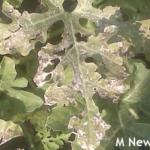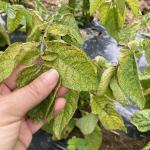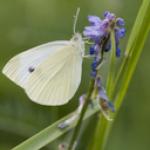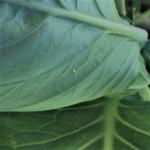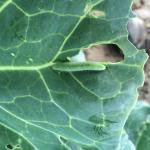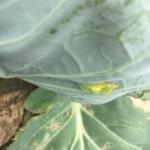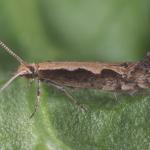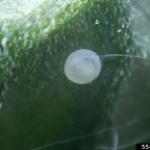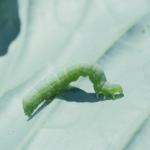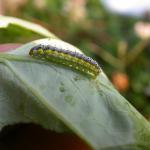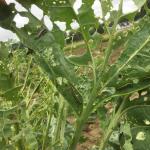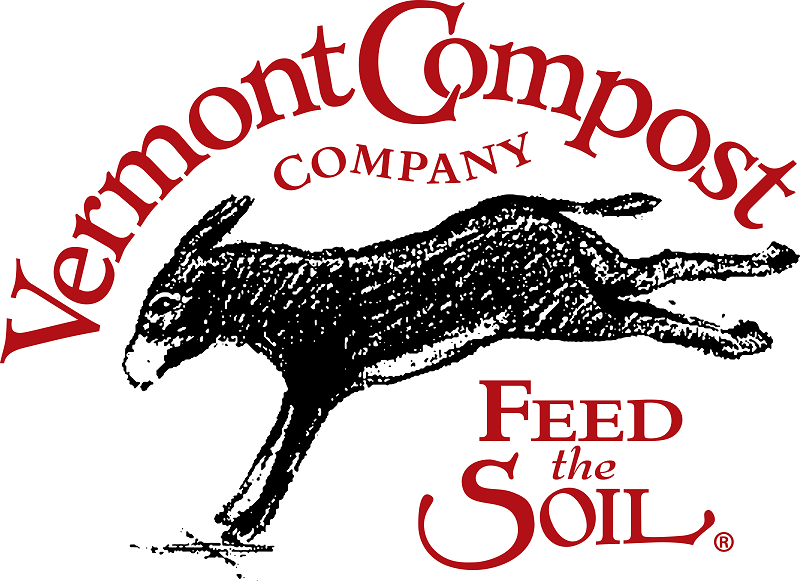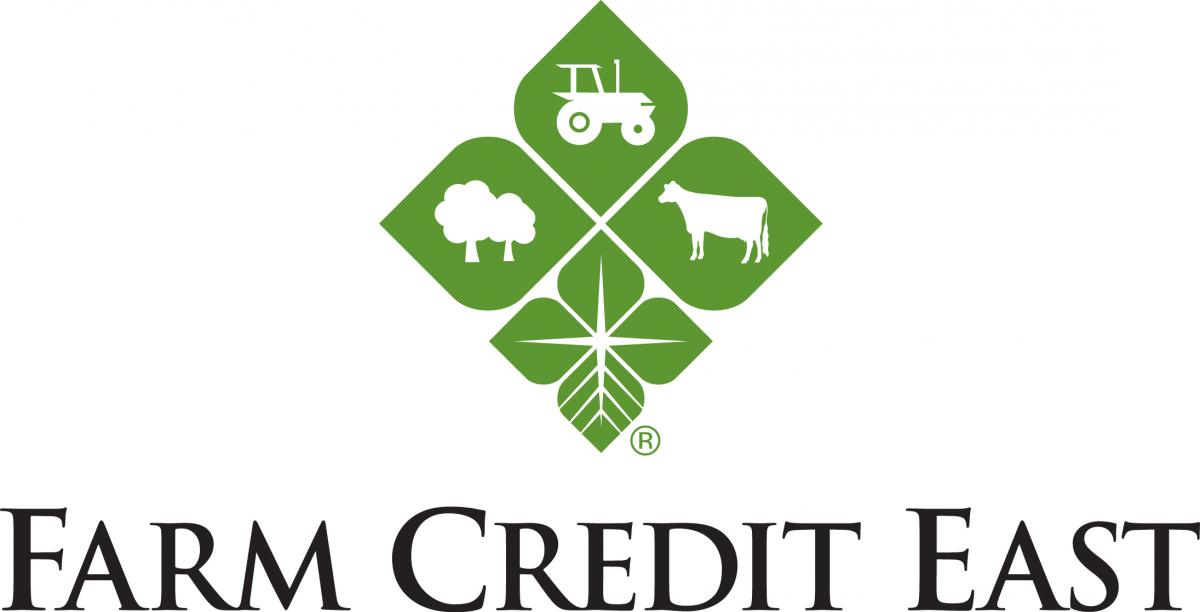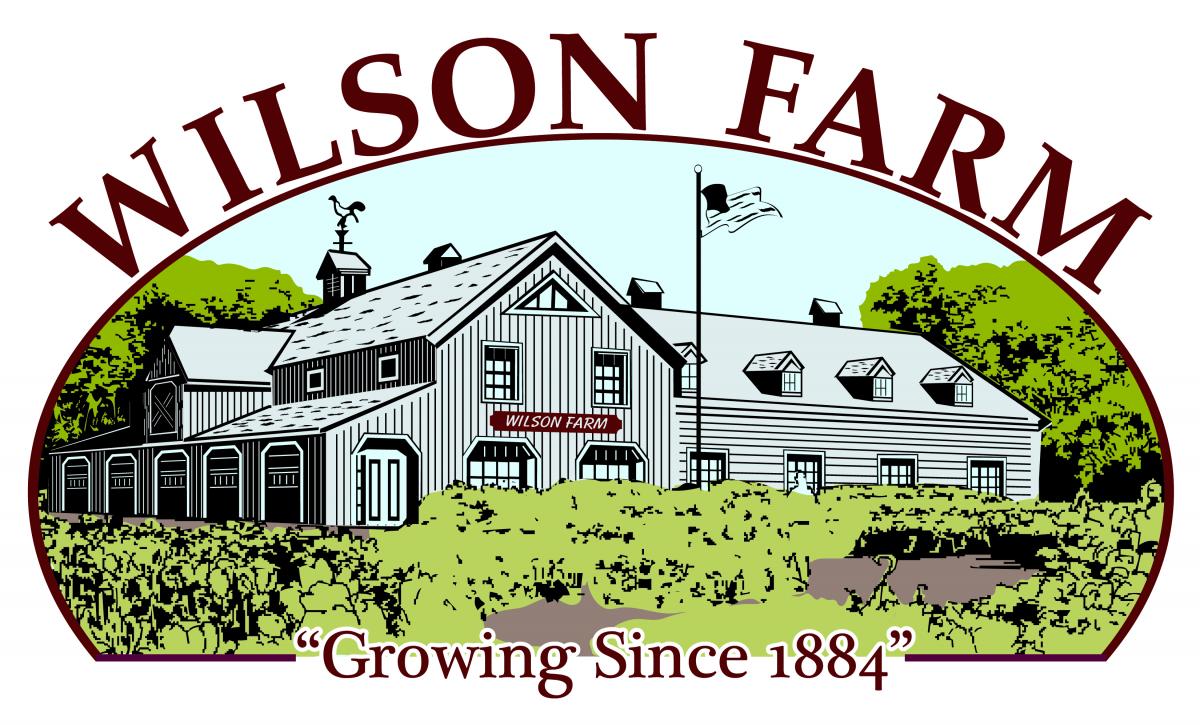To print this issue, either press CTRL/CMD + P or right click on the page and choose Print from the pop-up menu.

Crop Conditions
 Big rainstorms punctuated the heat last week, bringing inches of rain all at once, and over 4” fell in some places. Some places also got hail that ripped into crop foliage. Fields are slowly drying out and plans for planting and seeding are starting to get back on track now, with a few days in a row of good cultivating weather. Early sweet corn is ready, a full week ahead of the July 4 target! That is in-line with the pattern we’re seeing this summer—pests and crops alike are about a week early.
Big rainstorms punctuated the heat last week, bringing inches of rain all at once, and over 4” fell in some places. Some places also got hail that ripped into crop foliage. Fields are slowly drying out and plans for planting and seeding are starting to get back on track now, with a few days in a row of good cultivating weather. Early sweet corn is ready, a full week ahead of the July 4 target! That is in-line with the pattern we’re seeing this summer—pests and crops alike are about a week early.
It was great to see a wide variety of growers at this week’s field walk at Brookfield Farm. Managers Kerry and Max Taylor talked about their experience working with NRCS to engineer and install a well on the farm with a solar-powered pump. They’re still getting used to the technology and so far, it seems there are pros (e.g., no hauling gas out to the field) and cons (e.g., the sun has to be shining for the pump to work) but there seems to be reliable water in a field that didn’t have irrigation before, and the costs will all be covered by the NRCS cost-share for implementing a few different conservation practices.
We also had a great scouting demo in the green beans with Sue Scheufele, who instructed folks on how to find and identify Mexican bean beetle adults, egg masses, and larvae and how to use this information to determine when to order and release the biocontrol Pediobius foveolatus. This parasitoid wasp only attacks bean beetle larvae and is a great IPM tool for controlling this pest, especially in pick-your-own fields where growers might be trying to avoid using pesticides. See the pest alert in this issue for more details.
Maria Gannett, UMass Extension’s Weeds Specialist for Vegetable and Fruit Crops, also led a great field walk where we learned to ID horseweed, goldenrod, ragweed, giant ragweed, field and hedge bindweeds and many more! Maria talked about plant lifecycles, weed seed sizes, and soil fertility as considerations in managing weeds.
Next Wednesday we'll be at Hannan Healthy Foods in Lincoln for another field walk, with Eastern MA CRAFT - hope to see some of you there! Click here for more information and to register.
Finally, there are a few more chlorpyrifos products whose manufacturers terminated the labeled food uses ahead of an anticipated final ruling from EPA on limited tolerances for chlorpyrifos materials. The products that deleted food uses from their labels are Chlorpyrifos Technical, Pilot 4E and Pilot 15G Chlorpyrifos Agricultural Insecticide, all produced by Gharda Chemicals International, Inc. The Corteva product Dursban 50W in Water Soluble Packets was also cancelled. For more on EPA’s decision-making process on chlorpyrifos products, see their webpage Chlorpyrifos and related FAQs.
Pest Alerts
Alliums
Onion thrips were above threshold this week in a field that was below threshold a few weeks ago. We were expecting this population increase with the heat wave—thrips love heat! Scout infested crops weekly, gently pulling leaves apart from each other to check within the plant. An insecticide application is warranted if 1-3 thrips/leaf are found. Organic growers should use the lower 1 thrips/leaf threshold. The most effective material for organic growers is spinosad (e.g. Entrust). Apply with insecticidal soap (e.g. M-Pede, at the 1.5% v:v rate) to increase efficacy. Entrust can only be used two times in a row before rotating to a different insecticide class. Neem oil (e.g. Trilogy) and azadirachtin (e.g. Azatin O) may also be effective if applied when populations are still low. Pyrethrin (e.g. Pyganic) can provide knockdown control. Labeled conventional materials include neonicotinoids (e.g. Assail, Admire Pro), pyrethroids (e.g. Delta Gold, Declare, Warrior, Pounce, Mustang), spinetoram (e.g. Radiant), and spirotetramat (e.g. Movento). Movento and the neonicotinoids are systemic or translaminar and will work upon ingestion; pyrethroids work on contact and will not have long residuals. Use an adjuvant with all materials to help them adhere to waxy allium leaves, unless it says otherwise on the label.
Cucurbits
Ozone injury: We are seeing ozone injury in cucurbit crops now, resulting from high ozone pollution during last week's heat wave. See the article in this issue for more information.
Striped cucumber beetles (SCB) are continuing to cause lots of feeding damage in untreated crops. Cover new plantings with row cover to exclude beetles, or plan to protect them with an insecticide. There are a number of foliar and systemic conventional insecticides that can be used to control SCB—see our Striped Cucumber Beetle: Focus on Early Control article for details. Pyganic is the most effective material for organic growers—it must come into contact with the beetles to be effective, so good coverage is essential and multiple applications will be required for continued control.
S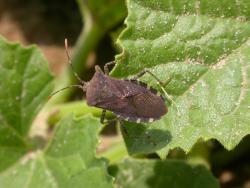 q
q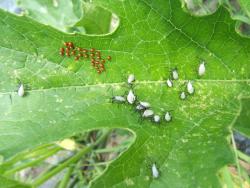 uash bugs and eggs were observed in several fields this week on both sides of the state. Squash bugs are large, shield-shaped true bugs that lay masses of round, shiny, bronze eggs, usually on the undersides of cucurbit leaves. Nymphs are light-gray with black legs. Adults and nymphs feed on plant sap with piercing sucking mouthparts and inject a toxin while they feed, which can cause foliage to wilt, turn black, and die—a symptom called Anasa wilt (named for the genus that squash bugs belong to). Damage is most severe on summer squash, zucchini, pumpkins, and Cucurbita maxima crops (e.g. Hubbards). Watermelon, cucumber, cantaloupe, and butternut will resist damage. Row covers will exclude squash bugs but must be removed to allow for pollination. For newly laid eggs and nymphs, consider a foliar application of acetamiprid (Assail 30 SG) which has moderate toxicity to bees (lower than other neonicotinoids). Adults and larger nymphs are more difficult to control, partly because they hide in the lower canopy and near the soil. An organic option for nymphs is a mixture of pyrethrin (a contact toxin) and azadiractin (an insect growth regulator, derived from neem). This would be gentler on bees than a high rate of pyrethrin alone and would include two modes of action. Insect growth regulators work to disrupt the molting process, so they are only useful on immature stages. Treat late in the day when the flowers are closed to reduce risk to bees.
uash bugs and eggs were observed in several fields this week on both sides of the state. Squash bugs are large, shield-shaped true bugs that lay masses of round, shiny, bronze eggs, usually on the undersides of cucurbit leaves. Nymphs are light-gray with black legs. Adults and nymphs feed on plant sap with piercing sucking mouthparts and inject a toxin while they feed, which can cause foliage to wilt, turn black, and die—a symptom called Anasa wilt (named for the genus that squash bugs belong to). Damage is most severe on summer squash, zucchini, pumpkins, and Cucurbita maxima crops (e.g. Hubbards). Watermelon, cucumber, cantaloupe, and butternut will resist damage. Row covers will exclude squash bugs but must be removed to allow for pollination. For newly laid eggs and nymphs, consider a foliar application of acetamiprid (Assail 30 SG) which has moderate toxicity to bees (lower than other neonicotinoids). Adults and larger nymphs are more difficult to control, partly because they hide in the lower canopy and near the soil. An organic option for nymphs is a mixture of pyrethrin (a contact toxin) and azadiractin (an insect growth regulator, derived from neem). This would be gentler on bees than a high rate of pyrethrin alone and would include two modes of action. Insect growth regulators work to disrupt the molting process, so they are only useful on immature stages. Treat late in the day when the flowers are closed to reduce risk to bees.
|
Trap Location
|
SVB
|
|---|---|
|
Whately
|
19
|
|
Sharon
|
23
|
|
Westhampton
|
5
|
|
Spray thresholds: 5 moths/night for bush-type cucurbits, or 12 moths/night for vining cucurbits.
|
|
Squash vine borer: We saw a spike in SVB trap counts (Table 1) at a few locations this week. SVB populations can vary widely between locations, so it's always best to trap on your own farm if you plan to use trapping numbers to set your spray schedule. We haven't received any reports of crop injury from larvae boring into stems yet.
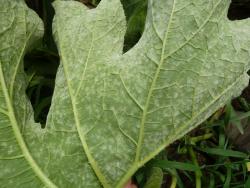 Powdery mildew (PM) is now being reported on cucurbits throughout the Northeast. PM is a fungal disease that produces powdery white sporulation on the tops and bottoms of leaves, as well as on petioles. It is different from the similarly-named downy mildew, which produces fuzzy gray sporulation, just on the undersides of leaves. PM occurs on all types of cucurbits, but there are resistant varieties of many cucurbit crops available. For effective chemical control, protectant fungicides (e.g. sulfur, horticultural oils, chlorothalonil, copper, mancozeb) should be applied weekly before symptoms develop in your crop. Once PM develops in your crop, add a PM-targeted material to your spray schedule and alternate between at least 2 different chemistries. Be sure to abide by application maximums listed on labels. Effective targeted materials include Vivando, the DMI fungicides (e.g. Proline, Procure), Gatten, the Luna fungicides (Sensation, Experience, and Flex), Miravis Prime, and Orondis Opti. See Managing Cucurbit Downy and Powdery Mildews in the May 23, 2024 issue of Veg Notes for more info and example spray schedules.
Powdery mildew (PM) is now being reported on cucurbits throughout the Northeast. PM is a fungal disease that produces powdery white sporulation on the tops and bottoms of leaves, as well as on petioles. It is different from the similarly-named downy mildew, which produces fuzzy gray sporulation, just on the undersides of leaves. PM occurs on all types of cucurbits, but there are resistant varieties of many cucurbit crops available. For effective chemical control, protectant fungicides (e.g. sulfur, horticultural oils, chlorothalonil, copper, mancozeb) should be applied weekly before symptoms develop in your crop. Once PM develops in your crop, add a PM-targeted material to your spray schedule and alternate between at least 2 different chemistries. Be sure to abide by application maximums listed on labels. Effective targeted materials include Vivando, the DMI fungicides (e.g. Proline, Procure), Gatten, the Luna fungicides (Sensation, Experience, and Flex), Miravis Prime, and Orondis Opti. See Managing Cucurbit Downy and Powdery Mildews in the May 23, 2024 issue of Veg Notes for more info and example spray schedules.
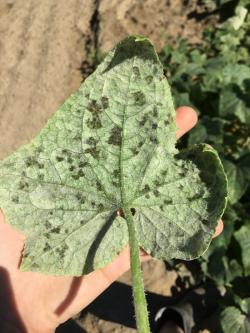 Cucurbit downy mildew (CDM) was reported on cucumber in southern Ontario, near Buffalo, NY, this week. Last week CDM was reported in New Jersey. There is a large greenhouse cucumber industry in Ontario, so it’s likely that CDM overwinters there, as well as in the southern US where cucumbers are grown year-round. There have been no reports of CDM moving closer to MA from NJ since last week. No pesticide applications are currently recommended for MA growers.
Cucurbit downy mildew (CDM) was reported on cucumber in southern Ontario, near Buffalo, NY, this week. Last week CDM was reported in New Jersey. There is a large greenhouse cucumber industry in Ontario, so it’s likely that CDM overwinters there, as well as in the southern US where cucumbers are grown year-round. There have been no reports of CDM moving closer to MA from NJ since last week. No pesticide applications are currently recommended for MA growers.
Legumes
Mexican bean beetle (MBB) adults, eggs, and larvae were present in a bean field in Hampshire Co. this week. Adults and larvae feed on legume foliage and can eventually skeletonize leaves. There are several generations per year. This pest can be controlled using the parasitic wasp biocontrol Pediobius faveolatus. The wasp lays its eggs in MBB larvae and the developing wasp larva feeds on the MBB larva from inside. Ideally, you will only need to release Pediobius in the first MBB generation—the wasps that hatch from the parasitized larvae will go on to control the next generation of larvae. Pediobius can be ordered from the NJ Department of Ag. Scout your beans and call to order the Pediobius immediately if you see larvae. If you don’t see larvae yet, flag an egg cluster and check it every few days to monitor when it hatches, then call to order the Pediobius. The wasp can be ordered as live adults, which are ready to parasitize when they are released, or as mummies with developing larvae inside. Wasps will emerge from the mummies within a few days.
Nightshades

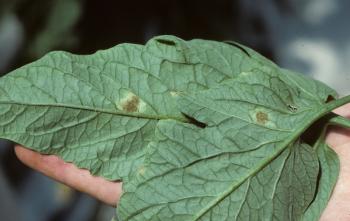 Tomato leaf mold was observed in several high tunnels this week. This fungal pathogen produces fuzzy olive-green sporulation in round patches on the undersides of leaves. The leaf usually turns yellow on the top of the leaf, opposite the sporulation. This disease almost exclusively occurs in high tunnel tomatoes, as it requires high heat and humidity. The best way to control leaf mold is by using resistant varieties (see this list compiled by Meg McGrath at Cornell Cooperative Extension).
Tomato leaf mold was observed in several high tunnels this week. This fungal pathogen produces fuzzy olive-green sporulation in round patches on the undersides of leaves. The leaf usually turns yellow on the top of the leaf, opposite the sporulation. This disease almost exclusively occurs in high tunnel tomatoes, as it requires high heat and humidity. The best way to control leaf mold is by using resistant varieties (see this list compiled by Meg McGrath at Cornell Cooperative Extension).
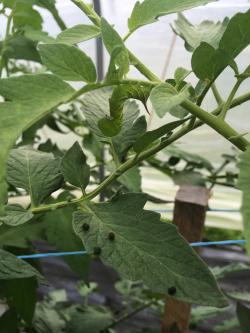 Hornworms are showing up in greenhouse and field tomatoes now. There are 2 species of hornworm—tomato hornworm and tobacco hornworm—but they can be treated the same. The caterpillars can cause significant feeding damage to tomato foliage and fruit. They camouflage very well in the foliage and are often first noticed because they produce a lot of dark green, pellet-shaped frass. Bt products (e.g. Dipel, Xentari) are effective against hornworms, or they can be hand-picked out of crops. Fun fact: hornworms have stripes that light up under black lights, so if you have a black light handy, take a look through your tomato crop at night with it and see the hornworm stripes glow!
Hornworms are showing up in greenhouse and field tomatoes now. There are 2 species of hornworm—tomato hornworm and tobacco hornworm—but they can be treated the same. The caterpillars can cause significant feeding damage to tomato foliage and fruit. They camouflage very well in the foliage and are often first noticed because they produce a lot of dark green, pellet-shaped frass. Bt products (e.g. Dipel, Xentari) are effective against hornworms, or they can be hand-picked out of crops. Fun fact: hornworms have stripes that light up under black lights, so if you have a black light handy, take a look through your tomato crop at night with it and see the hornworm stripes glow!
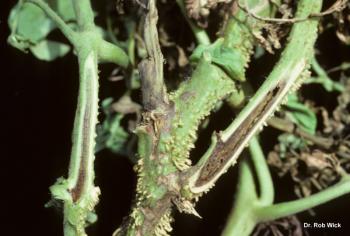 Pith necrosis was diagnosed in high tunnel tomatoes this week. The affected plants had yellowing leaves and side shoots, but the main stem looked green and healthy. Tomato plants with pith necrosis often produce lots of adventitious roots (roots coming from the stems), but this case didn't develop that symptom. Pith necrosis is caused by a weak bacterial pathogen that infects plants that are growing too quickly. Generally, pith necrosis occurs when plants are growing too fast. The disease is favored by high nitrogen fertility, cool nighttime temperatures, and high humidity. The only way to manage this disease is by avoiding favorable conditions, especially excessive nitrogen.
Pith necrosis was diagnosed in high tunnel tomatoes this week. The affected plants had yellowing leaves and side shoots, but the main stem looked green and healthy. Tomato plants with pith necrosis often produce lots of adventitious roots (roots coming from the stems), but this case didn't develop that symptom. Pith necrosis is caused by a weak bacterial pathogen that infects plants that are growing too quickly. Generally, pith necrosis occurs when plants are growing too fast. The disease is favored by high nitrogen fertility, cool nighttime temperatures, and high humidity. The only way to manage this disease is by avoiding favorable conditions, especially excessive nitrogen.
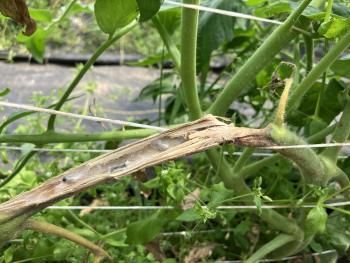 White mold was identified in another high tunnel with tomatoes this week. In tomatoes, this disease is often referred to as “timber rot”, as entire stems turn papery and tan. White mold, caused by the fungus Sclerotinia sclerotiorum, overwinters as sclerotia—masses of fungal tissue surrounded by a hard black rind—in infected crop residues and soil. The fungus will produce lots of fuzzy white mycelium in and on infected plants, and over time, these sclerotia will develop amongst the mycelium. Infected plants will wilt and die, with the stem turning brown. Crack open the stem to find the mycelium and sclerotia. Removing infected plants will reduce the amount of inoculum in the soil. Don’t compost infected plants. Contans is a commercially available biocontrol product for use against white mold. The material is applied in the fall. The current label for Contans does not include tomatoes, but it includes most other vegetable crops, which are also hosts for the disease. Therefore, it can be applied in the fall prior to planting winter greens into a tunnel, and it will control for white mold in the following summer crop.
White mold was identified in another high tunnel with tomatoes this week. In tomatoes, this disease is often referred to as “timber rot”, as entire stems turn papery and tan. White mold, caused by the fungus Sclerotinia sclerotiorum, overwinters as sclerotia—masses of fungal tissue surrounded by a hard black rind—in infected crop residues and soil. The fungus will produce lots of fuzzy white mycelium in and on infected plants, and over time, these sclerotia will develop amongst the mycelium. Infected plants will wilt and die, with the stem turning brown. Crack open the stem to find the mycelium and sclerotia. Removing infected plants will reduce the amount of inoculum in the soil. Don’t compost infected plants. Contans is a commercially available biocontrol product for use against white mold. The material is applied in the fall. The current label for Contans does not include tomatoes, but it includes most other vegetable crops, which are also hosts for the disease. Therefore, it can be applied in the fall prior to planting winter greens into a tunnel, and it will control for white mold in the following summer crop.
 Potato aphids continue to feed on tomatoes in high tunnels. Some growers have found success using Aphelinus abdominalis, a slower-acting parasitoid wasp than Aphidius ervi, for biological control. Ants, if present in large numbers, will protect aphids to feed on the sugary honeydew they produce and must be controlled before biocontrol can be effective. Household ant baits targeted towards sugar-loving ants are the recommended method for managing high populations of ants. The ants carry the bait back to the colony, resulting in its death. The baits should be placed around perimeters of high tunnels where ant trails are present.
Potato aphids continue to feed on tomatoes in high tunnels. Some growers have found success using Aphelinus abdominalis, a slower-acting parasitoid wasp than Aphidius ervi, for biological control. Ants, if present in large numbers, will protect aphids to feed on the sugary honeydew they produce and must be controlled before biocontrol can be effective. Household ant baits targeted towards sugar-loving ants are the recommended method for managing high populations of ants. The ants carry the bait back to the colony, resulting in its death. The baits should be placed around perimeters of high tunnels where ant trails are present.
Colorado potato beetle (CPB): We are nearing the end of the first generation of CPB now, and larvae that escaped treatment are quite large and getting ready to pupate. The large larvae can be hard to kill with pesticides, so physically knocking them off plants may be a better strategy at this point. As the next generation of CPB starts in the next week or two, remember you will need to switch IRAC classes on this next batch of beetles and larvae.
Sweet Corn
European corn borer (ECB): Peak flight is over but late ECB moths are still flying, mating, and laying eggs. A high of 10 moths was caught this week, at a trapping site in Middlesex Co. (Table 2). If moths are still active in your area, scout blocks of corn and treat if more than 12% of plants are infested in a 50-plant sample. Applying a pesticide to coincide with tassel emergence will control ECB that are feeding in the whorl/tassel, before they make their way down to the developing ear. See our Sweet Corn Insect Management Field Scouting Guide for detailed instructions on how to effeciently scout a corn field.
Corn earworm (CEW) moths have already been caught at almost every trapping site so far this year. This week, trap counts are warranting 4- to 6-day spray schedules in most locations. If CEW trap counts are below 1.4 moths/week (averaged between 2 traps), you should scout the silking corn for European corn borers and follow ECB thresholds for spraying.
| Nearest Weather station |
GDD (Base 50°F) |
Trap Location | ECB NY | ECB IA | FAW | CEW | CEW SPRay interval |
|---|---|---|---|---|---|---|---|
| Western MA | |||||||
| North Adams | 941 | n/a | - | - | - | - | - |
| Richmond | 800 | n/a | - | - | - | - | - |
| South Deerfield | 983 | Whately | 0 | 0 | - | 7 | 4 days |
| Chicopee Falls |
1009 |
Granby | 8 | 0 | 0 | 0 | no spray* |
| Granville | 839 | Southwick | 1 | 0 | 0 | 3 | 6 days |
| Central MA | |||||||
| Leominster |
861 |
Leominster | 1 | 0 | - | 4 | 5 days |
| Lancaster | 2 | 0 | 0 | 7 | 4 days | ||
| Northbridge | 884 | Grafton | 9 | 0 | 0 | 2 | 6 days |
| Worcester | 881 | Spencer | 0 | 0 | 0 | 0 | no spray* |
| Eastern MA | |||||||
| Bolton | 876 | Bolton | 1 | 0 | - | 1 | no spray* |
| Stow | 888 | Concord | 0 | 0 | 0 | 0 | no spray* |
| Ipswich | 858 | Ipswich | 6 | 0 | 0 | 5 | 5 days |
| - | Millis | 0 | 5 | n/a | - | - | |
| Sharon | 845 | North Easton | 0 | - | 0 | 4 | 5 days |
| Sharon | 0 | 0 | - | 13 | 4 days | ||
| - | ND | Sherborn | 10 | 0 | 0 | 1 | no spray* |
| Providence, RI | 887 | Seekonk | - | - | - | - | - |
| Swansea | 0 | 0 | - | 0 | no spray* | ||
|
ND - no GDD data for this location - no numbers reported for this trap n/a - this site does not trap for this pest * If CEW trap captures are below 1.4 moths/week, scout block for ECB and FAW caterpillars and make a pesticide application if 12% of plants in a 50-plant sample are infested. |
|||||||
| Moths/Night | Moths/Week | Spray Interval |
|---|---|---|
| 0 - 0.2 | 0 - 1.4 | no spray |
| 0.2 - 0.5 | 1.4 - 3.5 | 6 days |
| 0.5 - 1 | 3.5 - 7 | 5 days |
| 1 - 13 | 7 - 91 | 4 days |
| Over 13 | Over 91 | 3 days |
Multiple/Miscellaneous Crops

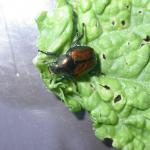 Scarab beetles have emerged and are feeding in crops now. There are several scarab beetle pests of vegetables, including Japanese beetles, Oriental beetles, and Asiatic garden beetles. All have wide host ranges. Japanese beetles especially love basil and can cause severe defoliation. The immature stages of all of these scarab beetles are grubs that live in the soil and feed primarily on grass roots. We often see high scarab beetle pressure in fields that were recently transitioned to vegetables from sod or in fields surrounded by lots of grasses. The New England Vegetable Management Guide lists products for Japanese and/or Oriental beetles in basil and sweet corn. For controls in a crop where these beetles are rarely a pest and therefore not mentioned in the Guide, check the label of commonly used broad spectrum synthetic pyrethroids, carbamates, and neonicotinoids (as foliar spray). Organic options include neem/azadiractin products and pyrethrin (e.g. Pyganic).
Scarab beetles have emerged and are feeding in crops now. There are several scarab beetle pests of vegetables, including Japanese beetles, Oriental beetles, and Asiatic garden beetles. All have wide host ranges. Japanese beetles especially love basil and can cause severe defoliation. The immature stages of all of these scarab beetles are grubs that live in the soil and feed primarily on grass roots. We often see high scarab beetle pressure in fields that were recently transitioned to vegetables from sod or in fields surrounded by lots of grasses. The New England Vegetable Management Guide lists products for Japanese and/or Oriental beetles in basil and sweet corn. For controls in a crop where these beetles are rarely a pest and therefore not mentioned in the Guide, check the label of commonly used broad spectrum synthetic pyrethroids, carbamates, and neonicotinoids (as foliar spray). Organic options include neem/azadiractin products and pyrethrin (e.g. Pyganic).
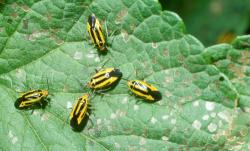 Four-lined plant bug damage is being seen in a variety of crops now. This pest is common on plants in the mint family, including basil. The feeding damage looks like large groups of dark or translucent round spots, concentrated around the base of leaves and leaf veins. The bug overwinters as an egg and nymphs emerge in late spring to begin feeding on crops. Chemical management is usually not recommended because the bugs are active for only a short period of time in late spring/early summer. In perennial mint crops, thoroughly cut back growth at the season’s end and destroy this debris in order to destroy the overwintering eggs.
Four-lined plant bug damage is being seen in a variety of crops now. This pest is common on plants in the mint family, including basil. The feeding damage looks like large groups of dark or translucent round spots, concentrated around the base of leaves and leaf veins. The bug overwinters as an egg and nymphs emerge in late spring to begin feeding on crops. Chemical management is usually not recommended because the bugs are active for only a short period of time in late spring/early summer. In perennial mint crops, thoroughly cut back growth at the season’s end and destroy this debris in order to destroy the overwintering eggs.
Contact Us
Contact the UMass Extension Vegetable Program with your farm-related questions, any time of the year. We always do our best to respond to all inquiries.
Vegetable Program: 413-577-3976, umassveg@umass.edu
Staff Directory: https://ag.umass.edu/vegetable/faculty-staff
Home Gardeners: Please contact the UMass GreenInfo Help Line with home gardening and homesteading questions, at greeninfo@umext.umass.edu.
Air Pollution Damage from Ozone in Vegetables, Revisited
--Written by Gordon Johnson, Extension Vegetable & Fruit Specialist Emeritus, Delaware Cooperative Extension. Originally published in Delaware Weekly Crop Update, June 21, 2019, https://sites.udel.edu/weeklycropupdate/?p=13572.
 [Eds. Note: During last week’s heat wave, we saw a spike in ozone pollution, which can cause crop damage. Most testing locations in MA remained above 60 ppb ozone from June 17 – 20, and some sites also had spikes earlier on June 13 and again yesterday (June 26). Atmospheric ozone levels in MA can be monitored on the Department of Environmental Protection’s MassAir website, here: https://eeaonline.eea.state.ma.us/dep/massair/web/#/trends/pollutant. This article cites ozone injury as occurring above 70 ppb, but levels above 60 ppb can result in injury in the most sensitive crops.]
[Eds. Note: During last week’s heat wave, we saw a spike in ozone pollution, which can cause crop damage. Most testing locations in MA remained above 60 ppb ozone from June 17 – 20, and some sites also had spikes earlier on June 13 and again yesterday (June 26). Atmospheric ozone levels in MA can be monitored on the Department of Environmental Protection’s MassAir website, here: https://eeaonline.eea.state.ma.us/dep/massair/web/#/trends/pollutant. This article cites ozone injury as occurring above 70 ppb, but levels above 60 ppb can result in injury in the most sensitive crops.]
We are starting to see evidence of air pollution damage from ozone in sensitive vegetable plants. Those vegetables most susceptible include potatoes, watermelons, cantaloupes, snap beans, pumpkins, and squash.
Damage is most common during hot, humid, hazy weather with little wind. Air inversions, when warm air at the surface is trapped by even hotter air in the atmosphere above, lead to build up of air pollutants that cannot disperse and, consequently, plant injury. The most common form of air pollution injury to plants is ozone damage. Ozone is a strong oxidant and is formed by the action of sunlight on products of fuel combustion. It is moved from areas of high concentration (cities, heavy traffic areas) to nearby fields.
Ozone injury in susceptible vegetable varieties develops when ozone levels are over 80 ppb for four or five consecutive hours, or 70 ppb for a day or two when vegetable foliage at a susceptible stage of growth. Because it occurs in areas with high levels of automobile exhausts, crop injury is often visible on fields near roads, especially with heavy summer weekend traffic. High pollution indexes in Baltimore and Washington are also a good indication that ozone damage may occur. [Or, for MA growers, check indixes in nearby urban areas].
In potatoes, symptoms of ozone damage occur on the most recently emerged leaves and can be seen as a black flecking. Early red varieties are most susceptible.
Injury on watermelon leaves consists of premature chlorosis (yellowing) on older leaves. Leaves subsequently develop brown or black spots with white patches. Watermelons are generally more susceptible than other cucurbits to ozone damage. Damage is more prevalent when fruits are maturing or when plants are under stress. Injury is seen on crown leaves first and then progresses outward. Seedless watermelon varieties tend to be more resistant to air pollution injury than seeded varieties, so injury often shows up on the pollenizer plants first. “Ice box” types are the most susceptible.
In muskmelons and other melons, the upper surface of leaves goes directly from yellow to a bleached white appearance.
Ozone injury on squash and pumpkins is intermediate between watermelon and cantaloupe starting with yellowing of older interior or crown leaves. These leaves subsequently turn a bleached white color with veins often remaining green.
In snap and lima beans, ozone causes small bleached spots giving a bronze appearance on upper leaf surfaces and pods. Leaves may ultimately turn chlorotic and senesce (drop).
Click on images below to enlarge.
Ozone injury can be easily misdiagnosed as mite injury, pesticide phytotoxicity, or deficiencies.
The key to avoiding air pollution injury is to plant varieties that are of low susceptibility and to limit plant stresses. Certain fungicides such as thiophanate methyl (Topsin and others) offer some protection against ozone damage.
Caterpillars in Brassica Crops
We’re seeing damage now from imported cabbageworm, diamondback moth, and cross-striped cabbageworm in brassicas across the state. Cabbage loopers should start to show up mid- to late summer. Though they may look similar, these four major brassica caterpillar pests are different species with important distinctions among them that can affect management decisions. They differ in size and feeding habits, as well as how susceptible they are to beneficial parasitoid insect species and certain insecticides. Getting acquainted with these pests will help you to know what kind of damage to expect and what to look for when scouting for their different life stages and biocontrols. Feeding damage by any of these caterpillars can reduce yield and marketability of both leafy and heading brassica crops.
Imported cabbageworm or cabbage butterfly (Pieris rapae) is a very familiar white butterfly that can be seen during the day fluttering around brassica fields. Each forewing has a dark border and one or two round black spots. Eggs are laid singly on the underside of leaves, standing upright. They are bullet-shaped, about 1/8-inch in length, and initially pale white, turning yellow as they mature. Larvae are gray-green, slightly fuzzy, and sluggish. They can be very well camouflaged, especially when they lie along the midrib of a leaf. Feeding and resting occur on the underside of leaves, and in cabbage or broccoli, the larvae feed more heavily in the head than on the other leaves. The overwintering stage is the chrysalis (pupa), which is green or brown and smooth, with three pointed ridges on its back. There are 3-4 generations per year.
Click on images to enlarge.
Diamondback moth (Plutella xylostella) adults are tiny (< ½ inch long) brown moths that and rest with their wings folded together like a tent. Historically, DBM did not overwinter in the Northeast, but caterpillars have been reported by May in recent years, suggesting that they may be overwintering in high tunnels or other warm spots. Regardless, this pest also blows in every year from warmer areas to our south. Adults are weak fliers, but populations are known to disperse long distances on wind and annually reinvade areas well into Canada. Eggs are laid singly or in small clusters. Caterpillars go through four instars and are small (< ½ inch when fully grown), light green, and appear segmented, with a forked end and pointed shape. When disturbed, they wiggle vigorously and may drop off the plant on a string of silk. Feeding causes small, round holes that don’t break through the top layer of leaf tissue, leaving translucent films across holes, called “windowpane” damage. Feeding tends to be spread across the foliage and is not necessarily concentrated in the head.
Cabbage looper (Trichoplusia ni) usually does not survive the winter in New England and arrives in migratory flights from farther south. Generally, populations of cabbage loopers are not high until late July or August, though earlier flights may occur in some years or they may not be found at all in others. Adult moths are mottled gray-brown, about ¾ inch long, with a distinct round silver-white mark on each forewing. Since they fly at night, they are rarely seen unless monitored with pheromone traps. If you want to know when moths arrive, use a wing trap baited with Trichoplusia ni lure, placed near the canopy. Eggs are round, pale green or yellow, and are laid singly underneath the foliage. The cabbage looper caterpillar is light green and smooth, with wavy white or light yellow lines down the back and sides and stubby legs at the tip of the abdomen. Full-grown larvae reach 1½ to 2 inches. Cabbage loopers of any size move like inchworms—by raising the middle of their body in a characteristic “loop” shape. Feeding tends to create large, ragged holes in foliage, on both frame leaves and heads. Cabbage looper also feeds on many non-brassicas including lettuce, celery, spinach, and chard, so when they do arrive, scout those crops as well as brassicas.
Cross-striped cabbageworm (Evergestis rimosalis): Formerly restricted to the South, this insect is now a serious problem on brassica crops in southeastern New England. Cross-striped cabbageworm does not generally overwinter in New England but we saw a very early infestation on one farm in MA this spring and are guessing that the caterpillars overwintered in high tunnel brassica crops. One of the major differences between this insect and the other brassica caterpillars is that the eggs are laid in a cluster, and caterpillars feed in a group on one plant so that it’s riddled with big holes like buckshot. CSCW is closely related to European corn borer, and the adults are similar in shape and coloring–straw-colored with a little purple, and crossed by wavy lines. Since the adults fly at night, you will likely only notice the caterpillars and their damage. The clusters of 3 to 25 eggs are yellow, flattened, and attached to the lower leaf surfaces. The caterpillars are light bluish-grey on top and green underneath, with numerous black transverse bands across their backs and a yellow line down each side. Larvae grow to ¾ inch long in 2 to 3 weeks. There are 2 to 3 generations per year, but generally, numbers do not reach damaging levels until late summer. Larvae can produce small holes in leaves until only veins remain, feed in terminal buds and sprouts, or burrow into heads. Plants with larvae are often completely skeletonized while adjacent plants may be left undamaged.
Scouting
It is especially important to check cabbage or broccoli plantings as they begin forming heads. Leafy greens such as collards and kale should be scouted earlier, since all leaves are marketed. Randomly select 25 plants throughout the field and check for caterpillars or fresh feeding damage on the top or underside of leaves. Look for black or green frass and tiny clustered feeding holes. It is often easier to spot the frass and feeding damage first before finding the caterpillar. Classify plants as infested (one or more caterpillars present) or non-infested, and calculate the percentage of plants infested. In the Northeast, there is generally no need to treat young plants until at least 35% are infested with caterpillars. Once heading crops (cabbage, broccoli, cauliflower) begin to form the head, a lower threshold should be used to protect the marketed head; treat heading crops after head formation if 15-20% or more of the plants are infested. The most critical time to scout and apply controls is just prior to head formation. For leafy crops like kale and collards, a 10-15% threshold should be used. Because cross-striped cabbageworm can be so destructive, a lower threshold should be used—treat when 5% of plants are infested with this pest.
Chemical Control
Use selective insecticides to protect beneficial insects that keep aphids under control, eat insect eggs and small caterpillars, and parasitize imported cabbageworm or diamondback moth. Selective products often are most effective when consumed with foliage, so coverage is important. Use at least 50 gallons of spray material per acre; higher volumes provide better coverage. Better coverage of lower leaf surfaces can also be achieved by using drop nozzles. Use a spreader-sticker to prevent sprays from rolling off of waxy leaves. The most effective materials include:
- Diamides (Group 28) including chlorantraniliprole (e.g. Coragen), cyantraniliprole (e.g. Exirel), and cyclaniliprole (e.g. Harvanta)
- Spinosyns (Group 5) including spinetoram (e.g. Radiant) and spinosad (e.g. Entrust) - also effective against flea beetles and onion thrips
- Bacillus thuringiensis (Group 11) including Bt aizawi (e.g. XenTari) and Bt kurstaki (e.g. Dipel DF, many other products) – these materials are highly selective and will ONLY affect caterpillars.
These materials and the aizawai strain of Bt will usually provide better control of resistant diamondback moth than older products. See the cabbage insect control section of the New England Vegetable Management Guide for additional synthetic and naturally derived products and more details.
Cultural and Biological Controls

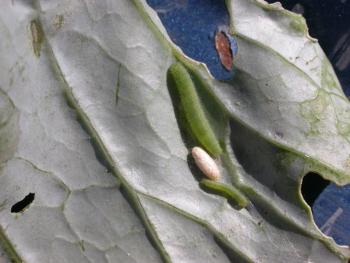 Incorporate crop residues shortly after harvest to decrease movement to successive plantings and reduce overwintering populations. Populations are suppressed by a wide range of natural enemies, including several species of parasitic wasps. Diamondback moth eggs are parasitized by the ichneumonid wasp, Diadegma insulare, which occurs naturally in eastern North America. D. insulare females require sources of nectar, so maintain wildflower stands near brassica fields. Imported cabbageworm eggs are parasitized by the braconid wasp, Cotesia rubecula, which was introduced to New England from China in 1988 and is now established in Massachusetts. You may see their small white cocoons on brassica leaves. The chalcid wasp, Trichogramma brassicae, will lay its eggs in many species of caterpillar, including all of the brassica pests above (as well as non-target caterpillars, so be cautious if you are maintaining wildflowers that might attract endangered moths or butterflies). T. brassicae wasps are not found in New England but can be purchased from several biological control companies for release in brassica fields. The wasps arrive as pre-parasitized caterpillar eggs that are glued to cards that can be distributed throughout the crop. As of 2022, each card costs around $20-23, and contains about 100,000 wasps, which is enough for up to 1 acre. According to one source of T. brassicae wasps, IPM Labs Inc., some growers will release the wasps in lieu of using any kind of pesticide. Some growers release one card per acre per week for about 4 weeks, while others will release every week for the life of the crop. These biological controls are compatible with many selective and lower impact sprays used for control of caterpillars (Bt, oils, soaps), especially because the wasps are protected from sprays when they are inside of host eggs. Another source, Evergreen Growers Supply, notes that Trichogramma wasps are more effective against moth species that lay their eggs in clusters, so they may be a good option if cross-striped cabbageworm has been a particular problem on your farm.
Incorporate crop residues shortly after harvest to decrease movement to successive plantings and reduce overwintering populations. Populations are suppressed by a wide range of natural enemies, including several species of parasitic wasps. Diamondback moth eggs are parasitized by the ichneumonid wasp, Diadegma insulare, which occurs naturally in eastern North America. D. insulare females require sources of nectar, so maintain wildflower stands near brassica fields. Imported cabbageworm eggs are parasitized by the braconid wasp, Cotesia rubecula, which was introduced to New England from China in 1988 and is now established in Massachusetts. You may see their small white cocoons on brassica leaves. The chalcid wasp, Trichogramma brassicae, will lay its eggs in many species of caterpillar, including all of the brassica pests above (as well as non-target caterpillars, so be cautious if you are maintaining wildflowers that might attract endangered moths or butterflies). T. brassicae wasps are not found in New England but can be purchased from several biological control companies for release in brassica fields. The wasps arrive as pre-parasitized caterpillar eggs that are glued to cards that can be distributed throughout the crop. As of 2022, each card costs around $20-23, and contains about 100,000 wasps, which is enough for up to 1 acre. According to one source of T. brassicae wasps, IPM Labs Inc., some growers will release the wasps in lieu of using any kind of pesticide. Some growers release one card per acre per week for about 4 weeks, while others will release every week for the life of the crop. These biological controls are compatible with many selective and lower impact sprays used for control of caterpillars (Bt, oils, soaps), especially because the wasps are protected from sprays when they are inside of host eggs. Another source, Evergreen Growers Supply, notes that Trichogramma wasps are more effective against moth species that lay their eggs in clusters, so they may be a good option if cross-striped cabbageworm has been a particular problem on your farm.
--Written by R. Hazzard, S.B. Scheufele, and L. McKeag
News
New MDAR Service: Farm Transfer Plan Assistance or Farm-Pass
MDAR’s new Farm-Pass Program will provide direct assistance to help Massachusetts farm owners pass their farm on to the next generation. This service is targeted to owners who have already identified a successor – either within the family or not – who is interested in transitioning to own and manage a commercial farm business on the farm property in the near future. This is a no-cost opportunity for farm owners, family members, and the identified successor to work one-on-one with an experienced, dedicated planner to create a customized farm transfer plan. Participants will meet regularly to set goals for retirement and the future farm business, and create tangible next steps to transfer assets and management.
MDAR's Farm Transfer Plan assistance program will match participants with a professional planner with experience working with farms on business management, financials, and farm transfer to meet regularly over the course of approximately one year. The planners will NOT provide legal or tax advice but WILL help you develop a written action plan that identifies concrete next steps to work on with your attorney and/or CPA/tax advisor to make the transfer happen.
Three rounds of this program are anticipated under this RFR. Applications will be accepted on a rolling basis, but must be received by the following dates in order to be considered for each round’s start date as follows:
- To start by August 30, 2024, applications must be received by July 15, 2024.
- To start by March 1, 2025, applications must be received by January 15, 2025
- To start by June 1, 2025, applications must be received by April 15, 2025
CLICK HERE to apply. The PDF titled “AGR-FTPA-FY25-26” is the Request for Response with information and the application form.
Questions? Contact Melissa Adams, 857-276-2377, Melissa.L.Adams@mass.gov or Laura Barley, 857-507-5548, Laura.Barley@mass.gov.
39th Massachusetts Tomato Contest to be Held on August 20
The 39th Massachusetts Tomato Contest will be held at the Boston Public Market on Tuesday, August 20. Tomatoes will be judged by a panel of experts on flavor, firmness/slicing quality, exterior color and shape. Always a lively and fun event, the day is designed to increase awareness of locally grown produce.
Open to commercial farmers in Massachusetts, growers can bring tomatoes to the market between 8:45 am and 10:45 am on August 20 or drop their entries off with a registration form to one of the regional drop-off locations on Monday, August 19. Drop off locations include sites in South Deerfield, Southboro, North Easton and West Newbury. These tomatoes will be brought to Boston on Tuesday.
For complete details, including drop off locations, contest criteria, and a registration form, click here. Be sure to include the registration form with all entries.
The Massachusetts Tomato Contest is sponsored by MDAR and New England Vegetable and Berry Growers Association, in cooperation with the Boston Public Market. Please consider participating to showcase one of the season’s most anticipated crops!
Questions? Contact David Webber, David.Webber@mass.gov.
Events
Field Walk at Hannan Healthy Foods - Lincoln, MA
When: Wednesday, July 3, 2024, 4-6pm
Where: Hannan Healthy Foods, 270 South Great Rd., Lincoln, MA 01773. Park in the lot by the farm stand, carpool if possible as space is limited and the stand will be open to customers at this time.
Registration: Free! Please register in advance so we can order enough food. Click here to register.
Join Eastern MA CRAFT, UMass Extension, and NOFA/Mass for a pest walk at Hannan Healthy Foods in Lincoln, MA! We will discuss how to identify and monitor some of the most prolific and problematic pests and diseases ubiquitous to organic production. Scouting and identification are the first steps towards proactive mitigation practices, learn how to see the farm with fresh eyes.
2 pesticide recertification credits are available for this program.
This event is supported by the Transition to Organic Partnership Program.
Field Walk at Astarte Farm - Hadley, MA
When: Tuesday, July 9, 2024, 4-6pm followed by light dinner
Where: Astarte Farm, 123 West St., Hadley, MA 01035
Registration: Free! Please register in advance so we can order enough food. Click here to register.
Join Astarte Farm, the UMass Extension Vegetable Program and NOFA/Mass for a twilight meeting!
- Ellen and Dan from Astarte Farm will lead a tour of the farm, highlighting pollinator habitat that they've installed. The habitat was installed with funding from NRCS.
- Hannah Whitehead, UMass Extension Educator, will talk about the benefits of pollinator habitat for organic farmers.
- Sarah Berquist, UMass Lecturer and cut flower farmer, will discuss the flowers that she grows at Astarte.
1 pesticide recertification credit is available for this program.
This event is supported by and MDAR Specialty Crop Grant and the Transition to Organic Partnership Program.
Field Walk at Morning Glory Farm - Edgartown MA
When: Wednesday, July 17, 2024, 6-8pm
Where: Morning Glory Farm, Edgartown, MA
Registration: Free! Please register in advance so we can order enough food. Click here to register.
Join UMass Extension specialists Sue Scheufele and Maria Gannett for a field walk at Morning Glory Farm. We will identify current pest and weed issues in vegetable crops and discuss their management. There will be lots of time for Q&A, discussion, and dinner and refreshments will be provided.
2 pesticide recertification credits are available for this program.
This event is co-sponsored by NOFA/Mass and Martha’s Vineyard Ag Society with support from the Transition to Organic Partnership Program.
Water & Climate Change Twilight Meeting at Bardwell Farm – Hatfield, MA
When: Friday, August 2, 2024, 5-7pm, with dinner and discussion to follow
Where: Bardwell Farm, 49 Main St., Hatfield, MA 01038
Registration: Free! Please register in advance so we can order enough food. Click here to register.
Join UMass Extension and CISA for a climate-themed twilight meeting at Bardwell Farm in Hatfield, MA!
- Lisa McKeag will share findings from her recent water quality survey of farms around MA and discuss potential risks and impacts of weather and climate change and rising year-round temperatures on agricultural water quality.
- Harrison Bardwell will show off his new automated irrigation system, and discuss irrigation practices and funded projects around the farm.
- Sue Scheufele will discuss increasing pest risks caused by a hotter climate on vegetable pests including an on-farm trial for managing Phytophthora blight in peppers hosted by Bardwell Farm.
1 pesticide recertification credit is available for this program.
This event is co-sponsored by CISA as part of their Adapting your Farm to Climate Change Series.
Save the Date! UMass Research Farm Field Day
When: August 13, 2024, time TBD
Where: UMass Crop & Livestock Research & Education Farm, 89 River Rd., South Deerfield, MA
Registration: Coming soon!
Come learn about all the research being done by students and faculty across CNS and by UMass Extension on a tour of the farm. Topics include pollinator habitat, bee health and disease ecology, novel cover cropping strategies, intercropping to reduce greenhouse gas emissions, genetic basis of flowering traits in agriculture, and vegetable variety trials including heat-resistant lettuce varieties for summer production.
Field Walk at Siena Farms - Sudbury, MA
When: Wednesday, August 21, 2024, 4-6pm
Where: Siena Farms, 113 Haynes Rd, Sudbury, MA 01776
Registration: Free! Please register in advance, for food ordering purposes. Click here to register.
Join us for a field walk at Siena Farms! Someone from the farm will discuss their sunflower production, and the UMass Extension Vegetable Program will lead a pest walk. Light dinner and refreshments will be served at the end, with plenty of time to talk with fellow growers!
1 pesticide recertification credit is available for this program.
This event is funded by a grant from the Massachusetts Department of Agriculture.
Twilight Meeting: Climate Impacts on Weed Management and Soil Health
When: Tuesday, October 8, 2024, 4-6pm, with a light supper to follow
Where: UMass Crop & Livestock Research & Education Farm, 89 River Rd., South Deerfield, MA, 01373
Registration: Free! Please register in advance so we can order enough food. Click here to register.
How are climate change and hotter temperatures affecting our soils? Often, practices like reducing tillage and cover cropping are recommended to improve soil health, reduce risk of topsoil loss and enhance resilience to drought and flood—practices that can also affect weed management. UMass Extension will discuss general impacts of climate change on soil health and highlight current research on updating recommendations for planting timing and overwintering survival of cover crop species in MA. Maria Gannett, UMass Extension Weeds Specialist, will relate these strategies to how they can impact weed management.
1 pesticide recertification credit is available for this program.
This event is co-sponsored by CISA as part of their Adapting your Farm to Climate Change Series.
New England Vegetable & Fruit Conference - Registration Now Open!
When: Tuesday - Thursday, December 17-19, 2024, 8am-6pm daily
Where: Doubletree Hotel, 700 Elm St., Manchester, NH 03101
Registration: Before November 30, $115/person, or $85 for additional attendees if registering as a group. Students $50. Registration capped at 1,400. Click here to register.
The NEVF Conference includes more than 25 educational sessions over three days, covering major vegetable, berry and tree fruit crops as well as various special topics. A Farmer-to-Farmer meeting after each morning and afternoon session will bring speakers and farmers together for informal, in-depth discussions on certain issues. The extensive trade show has over 120 exhibitors.
Vegetable Notes. Maria Gannett, Genevieve Higgins, Lisa McKeag, Susan Scheufele, Alireza Shokoohi, Hannah Whitehead, co-editors. All photos in this publication are credited to the UMass Extension Vegetable Program unless otherwise noted.
Where trade names or commercial products are used, no company or product endorsement is implied or intended. Always read the label before using any pesticide. The label is the legal document for product use. Disregard any information in this newsletter if it is in conflict with the label.
The University of Massachusetts Extension is an equal opportunity provider and employer, United States Department of Agriculture cooperating. Contact your local Extension office for information on disability accommodations. Contact the State Center Directors Office if you have concerns related to discrimination, 413-545-4800.
